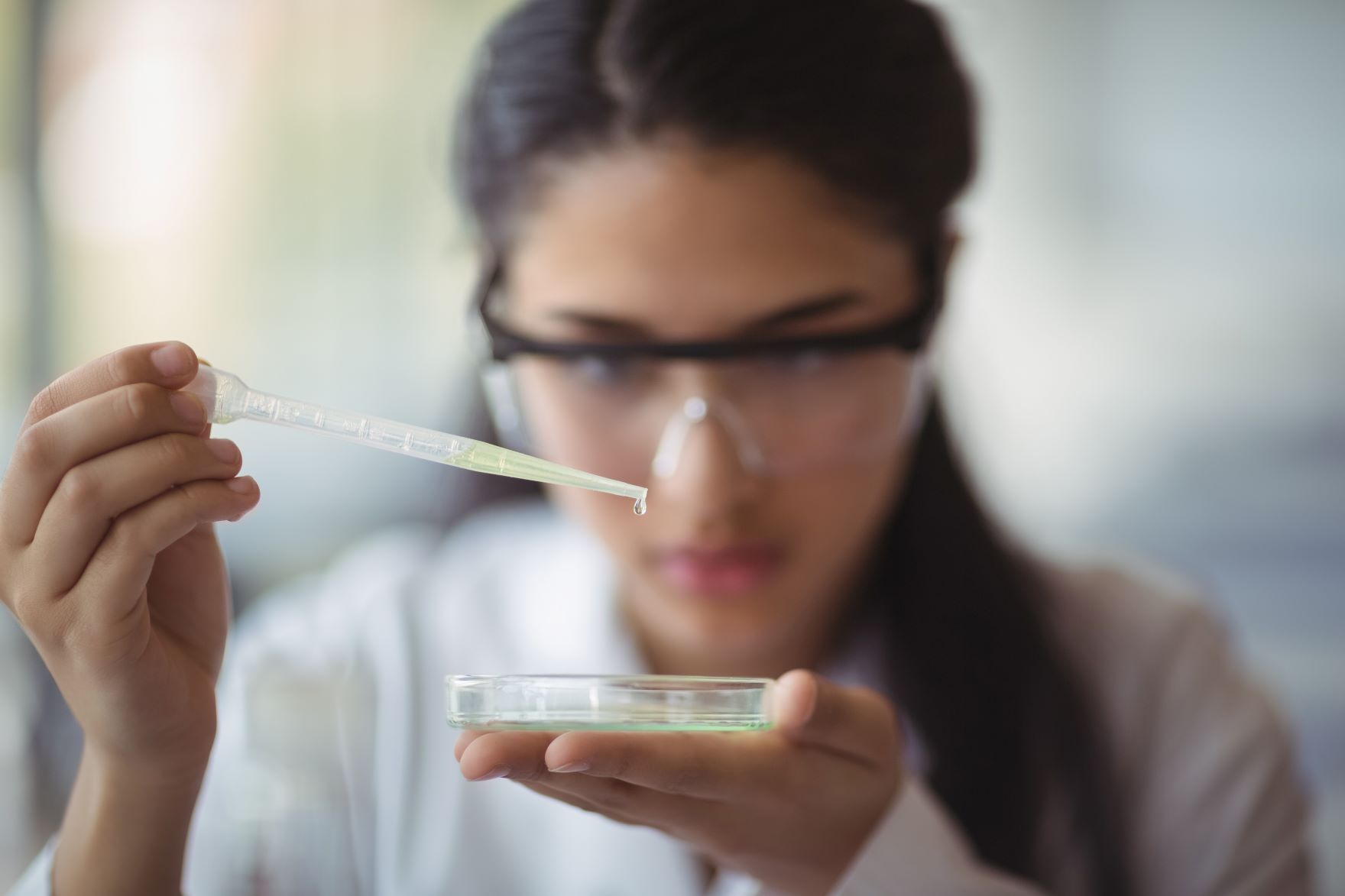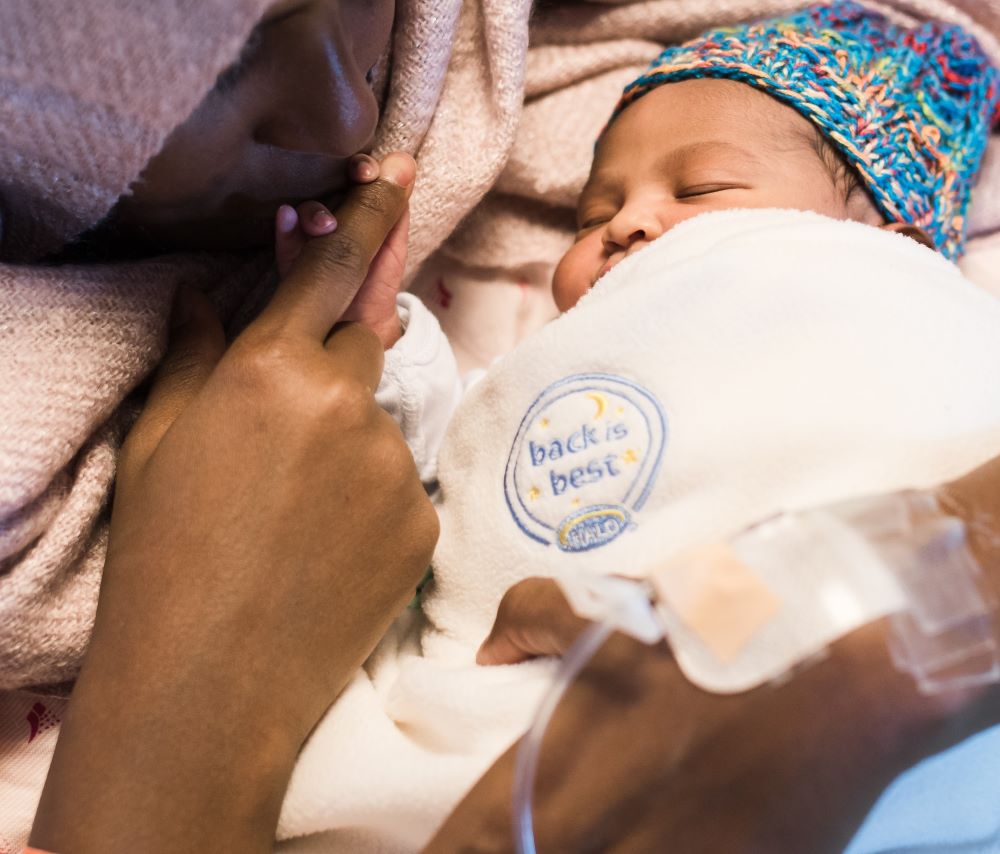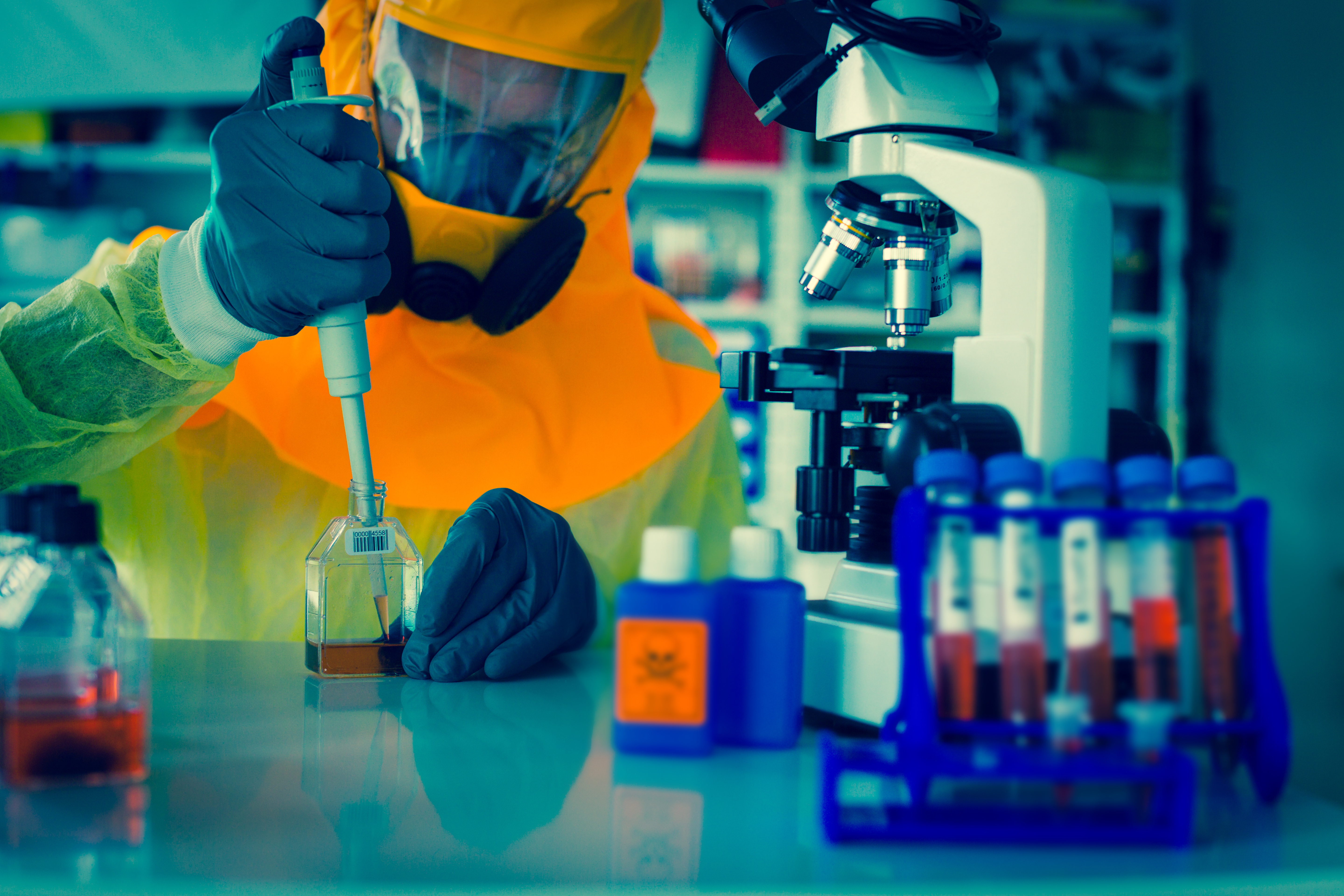2025 Public Health Laboratory Newsroom
 The Minnesota Department of Health (MDH) Public Health Laboratory provides many services that help keep Minnesotans safe. Each section of the lab plays a different role in protecting the public’s health by working together with partners at the local, state, and national levels.
The Minnesota Department of Health (MDH) Public Health Laboratory provides many services that help keep Minnesotans safe. Each section of the lab plays a different role in protecting the public’s health by working together with partners at the local, state, and national levels.
In 2025 we converted our annual report to a newsroom that publishes stories online as they arise. Below are links to some of the notable stories from our labs this year:
Environmental Laboratory
 The Environmental Laboratory performs chemical, bacteriological, and radiological testing of environmental samples for pollutants that may affect the health of Minnesotans. These samples include water, air, soil, and hazardous waste. The Environmental Lab also uses biomonitoring -- identifying and measuring potentially toxic chemicals in the body -- to help determine populations at risk for exposure to environmental hazards. Working with partners around the state, the lab tests well water for contamination after floods, performs routine monitoring of the environment and drinking water facilities, prepares to respond to radiologic emergencies, and supports public health biosurveillance activities.
The Environmental Laboratory performs chemical, bacteriological, and radiological testing of environmental samples for pollutants that may affect the health of Minnesotans. These samples include water, air, soil, and hazardous waste. The Environmental Lab also uses biomonitoring -- identifying and measuring potentially toxic chemicals in the body -- to help determine populations at risk for exposure to environmental hazards. Working with partners around the state, the lab tests well water for contamination after floods, performs routine monitoring of the environment and drinking water facilities, prepares to respond to radiologic emergencies, and supports public health biosurveillance activities.
Environmental Laboratory stories:
- How Minnesota Tests for Lead in Water at Schools, Child Care Centers
- In Poisoning Case, Police Assisted by Minn. Public Health Lab
- Metals Laboratory Tests for Arsenic, Lead, and More
- Minn. Public Health Lab Uses High Tech Equipment to Detect Harmful Algae Blooms
- Mysterious River Oil Sheen Investigated by Public Health Laboratory
- Saunas' Impact on Firefighters’ Cancer Risks Studied by Minn. Public Health Lab
Infectious Disease Laboratory
 The Infectious Disease Laboratory works to identify changes in known pathogens, detect emerging diseases, and identify sources of disease outbreaks in Minnesota and nationwide. The quick results provided are critical to identifying outbreaks before they spread. The lab tests for a wide variety of diseases, including influenza, rabies, tuberculosis, meningitis, and many different illnesses caused by contaminated food and water.
The Infectious Disease Laboratory works to identify changes in known pathogens, detect emerging diseases, and identify sources of disease outbreaks in Minnesota and nationwide. The quick results provided are critical to identifying outbreaks before they spread. The lab tests for a wide variety of diseases, including influenza, rabies, tuberculosis, meningitis, and many different illnesses caused by contaminated food and water.
The Infectious Disease Laboratory staff members played a critical role during the COVID-19 pandemic. The lab was the first place in Minnesota to perform testing for the virus that causes COVID-19, processing hundreds of thousands of samples, and led the nation in whole genome sequencing to identify new SARS-CoV-2 variants.
Infectious Disease Laboratory stories:
- Flurry of Norovirus Outbreaks Tackled by Minnesota Public Health Laboratory, Epidemiologists
- In Minnesota, Only the Public Health Laboratory Tests for Rabies
- Minnesota’s Fall 2025 Respiratory Viruses
- Minnesota’s Global Leadership in Tracking RSV
- Minn. Public Health Lab Helps Combat Rising Tuberculosis Rates
- Minn. Public Health Lab Tapped to Consult with Jordan’s National Lab
- Minn. Public Health Lab Teaches Students About Disease Outbreaks
- Minnesota Public Health Laboratory Remains Central to Tracking COVID-19
- National Leader in Pathogen Genome Sequencing: Minn. Public Health Lab
- Safely Working With Dangerous Organisms at the Minn. Public Health Lab
- Syphilis Cases are Spiking Nationally but Declining in Minnesota
- Tackling Tularemia with Teamwork
- West Nile Virus Cases Continue to Rise in Minnesota – The Public Health Laboratory Responds
Newborn Screening Program
 The Newborn Screening Program screens infants for over 60 rare, serious, and hidden disorders, including hearing loss and critical congenital heart disease (CCHD). If left untreated, these disorders can lead to illness, physical disability, developmental delay, or death. Newborn screening aims to identify disorders before symptoms appear so affected infants can receive prompt diagnosis and treatment. Working together with Minnesota’s medical professionals, the Newborn Screening Program screens nearly 63,000 babies each year.
The Newborn Screening Program screens infants for over 60 rare, serious, and hidden disorders, including hearing loss and critical congenital heart disease (CCHD). If left untreated, these disorders can lead to illness, physical disability, developmental delay, or death. Newborn screening aims to identify disorders before symptoms appear so affected infants can receive prompt diagnosis and treatment. Working together with Minnesota’s medical professionals, the Newborn Screening Program screens nearly 63,000 babies each year.
Newborn Screening Program story:
- 60 Years, Hundreds of Newborns Helped: A History of PKU Screening
- Baby’s Deadly Disorder Uncovered in Part Due to Minnesota Newborn Screening
Emergency Preparedness and Response
 The Public Health Laboratory's Emergency Preparedness and Response program responds to emergencies that involve potential chemical, biological, or radiological agents that threaten the health of Minnesotans. The laboratory performs analytical testing as needed and provide training to sentinel laboratories—clinical laboratories on the front lines of disease detection—and first responders across the state. MDH’s Public Health Laboratory plays a role in multiple national laboratory networks, including the Laboratory Response Network (LRN), sharing testing capabilities and providing increased capacity for emergencies that occur in Minnesota and elsewhere in the United States.
The Public Health Laboratory's Emergency Preparedness and Response program responds to emergencies that involve potential chemical, biological, or radiological agents that threaten the health of Minnesotans. The laboratory performs analytical testing as needed and provide training to sentinel laboratories—clinical laboratories on the front lines of disease detection—and first responders across the state. MDH’s Public Health Laboratory plays a role in multiple national laboratory networks, including the Laboratory Response Network (LRN), sharing testing capabilities and providing increased capacity for emergencies that occur in Minnesota and elsewhere in the United States.
Return to the main Public Health Laboratory Newsroom.